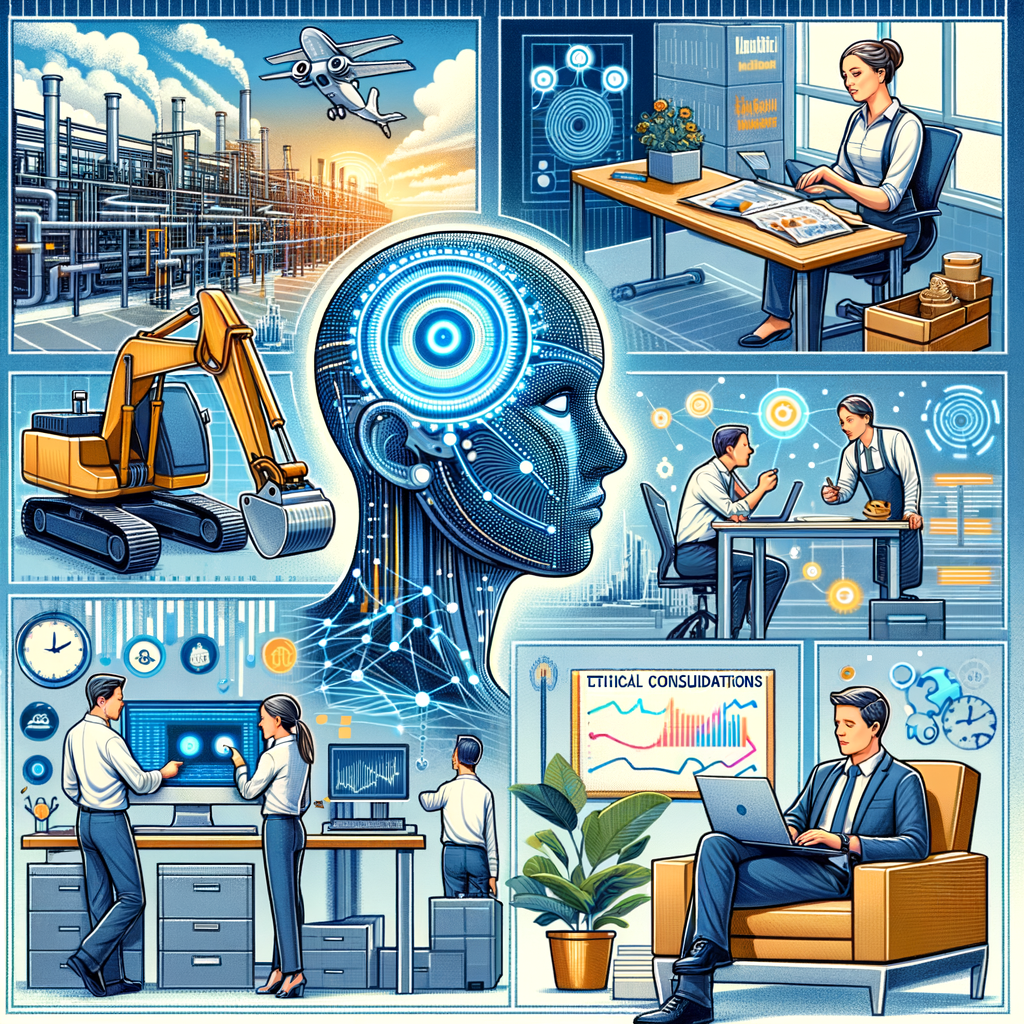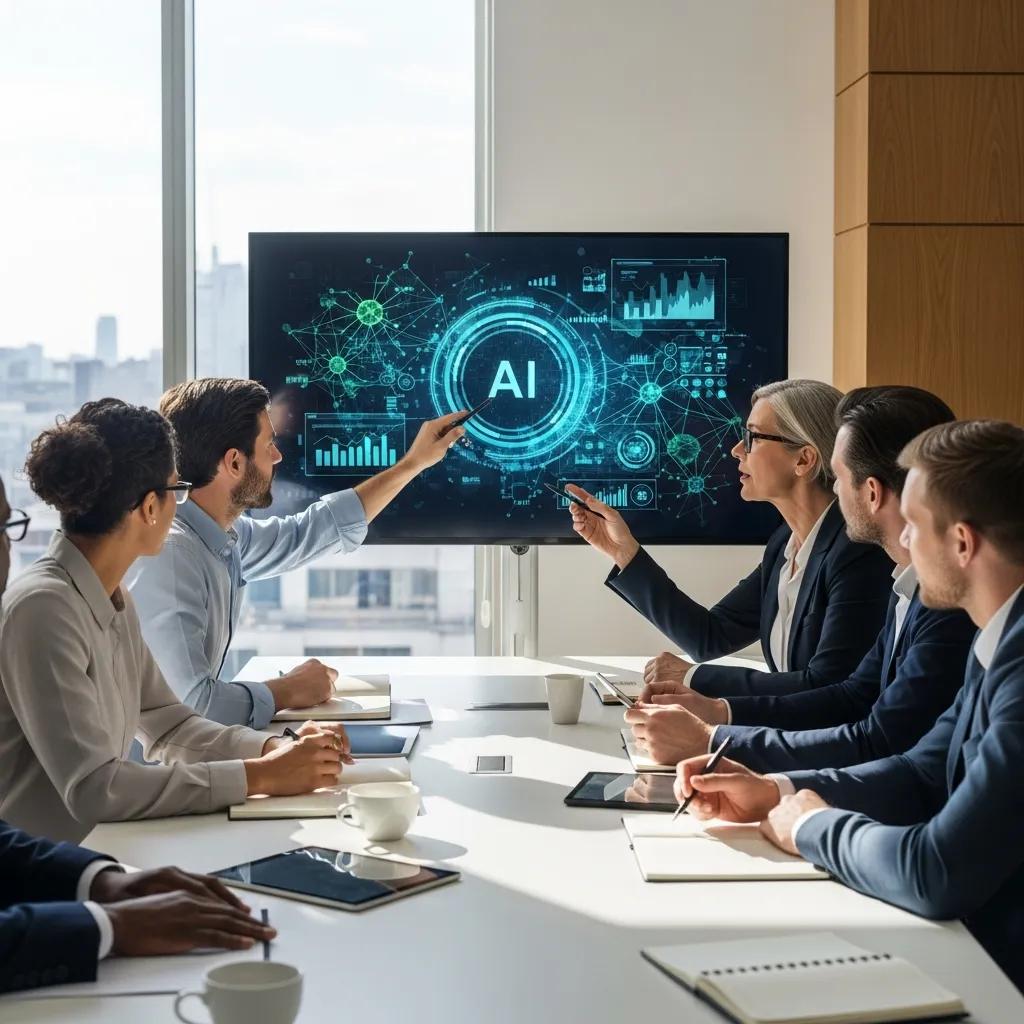Feeling overwhelmed by all the AI hype? You’re not alone. Small and mid-sized business owners are curious about AI-driven innovation, but they’re also unsure how to practically apply it. They want to improve employee well-being, productivity, and work-life balance. This isn’t about robots taking over; it’s about finding AI solutions that benefit everyone.
This article cuts through the noise to explore realistic AI-driven innovation. Discover what it truly means for your company and employees, helping everyone win. We’ll also answer questions about AI’s application in today’s business world and debunk common misconceptions. Whether you’re new to AI or need clarification, this conversation welcomes your honest questions.
What is AI-Driven Innovation?
AI-driven innovation uses artificial intelligence to boost the creation of new ideas, products, and services. AI is a partner, improving and supporting employees’ existing skills. AI innovation can streamline work processes through automation.
It provides unique insights and perspectives on data, but AI is just a tool. The human team, not algorithms, guides innovation. This allows companies to focus on leveraging AI capabilities to enhance their existing innovation processes.
How AI Fuels Innovation
AI can analyze vast amounts of data that are difficult for humans to process. This allows employees access to different types of conclusions or trends. No single person can process such a large volume of data. AI helps organizations identify patterns and emerging trends which drives innovation. According to research conducted by BCG, embracing AI, specifically tools like ChatGPT, provide a 40% edge in product innovation over those using old methods.
Consider using AI-driven finance analytics to identify market trends. AI algorithms can also manage ad spending. They can even analyze data about customer behaviors and improve eCommerce campaigns, such as optimizing video editing. Businesses adopting AI see huge boosts to idea generation. Leveraging AI algorithms is also how you optimize resource allocation and streamline your innovation management processes.
One study found those using ChatGPT-4 generated a staggering 800 ideas per hour. Those without it generated just 20. Humans, however, still maintain direction over such AI systems. The role of AI technologies is to augment, not replace, human expertise.
Real-World Examples of AI-Driven Innovation
AI is transforming various fields in ways that exceed expectations. AI can minimize waste for energy companies. AI algorithms can automate repetitive tasks and reduce costs. Doctors can improve diagnostics. Recent developments by IBM show almost 75% of energy companies studied are incorporating AI for decision-making. By incorporating AI, life science companies gain insights from data analytics and design thinking principles. These insights help create innovative solutions.
MYbank in China uses AI to help small businesses access credit. This access may not be possible with traditional loan processes. The bank leverages machine learning to evaluate loan applications. This provides opportunity to people normally locked out by traditional models.
Addressing Concerns About AI
Understandably, this new technology makes some people nervous. Roughly half of Americans express concern about the patient/doctor relationship as AI becomes more prevalent. Concerns about data security, data privacy, job security, and career paths are all valid. Data analysis powered by natural language processing models will have a huge impact. While open dialog between management and employees about such AI systems can ease the uncertainty.
According to Deloitte, about 6 out of 10 workers believe AI innovation will generate groundbreaking solutions. Open communication between leadership and employees about the application development of AI can also build trust. This helps employees feel valued as a critical part of a successful future.
These changes will create new career and growth opportunities. While generative AI tools automate some repetitive tasks, the focus should be on using AI to enhance existing human expertise. Open discussions will help navigate changes within a fast paced world embracing these transformative technologies. It is estimated 2024 may prove to be one of the most important years so far as business try to integrate all the recent changes in AI capabilities into daily usage. There are concerns around training AI models as well as making sure such AI models and any subsequent AI algorithms or AI technologies developed using the generated ideas have good security as well as not negatively affecting competitive edge of companies. While there is so much change in the world due to these new technologies coming, according to many, 2024 will probably become a more historic turning point than any before it within AI technologies due to such rapid evolution as businesses rush to understand how to best utilize these changes.
FAQs about ai driven innovation
How does AI drive innovation?
AI boosts innovation by automating tasks, analyzing massive datasets, and generating creative ideas. This allows companies to rapidly improve existing and develop new products and services.
What does AI innovation mean?
AI innovation means leveraging artificial intelligence to transform business processes. From product conception to market analysis, AI creates opportunities. It can also improve efficiencies within staff procedures at speeds never before possible. Ethical considerations, however, must guide innovation and deployment of AI systems.
What does AI-driven mean?
AI-driven means artificial intelligence plays a key role in decision-making and execution. It does this by speeding up automation and increasing the depth of human analysis. Currently, in 2024, AI acts as a supportive technology, enabling humans to turn their visions into reality.
It may also trigger new projects, given its ability to quickly generate numerous ideas. How to best use such AI capabilities or AI technologies to streamline processes will be an area explored. Using such generated ideas can be used to help create personalized marketing solutions as well as improve data security.
What is the latest innovation in AI?
The rapid growth of generative AI, as seen in tools like ChatGPT, has revolutionized creative output across multiple sectors. This is particularly significant considering the public adoption of these tools in 2023.
Concluding Thoughts on AI-Driven Innovation
AI-driven innovation has amazing potential to grow your business and improve employee well-being. However, it’s not a quick fix. AI should always serve human-driven goals.
Addressing employee concerns about these revolutionary technologies is crucial. Open conversations are essential in navigating the rapid advancements of AI in 2024.



